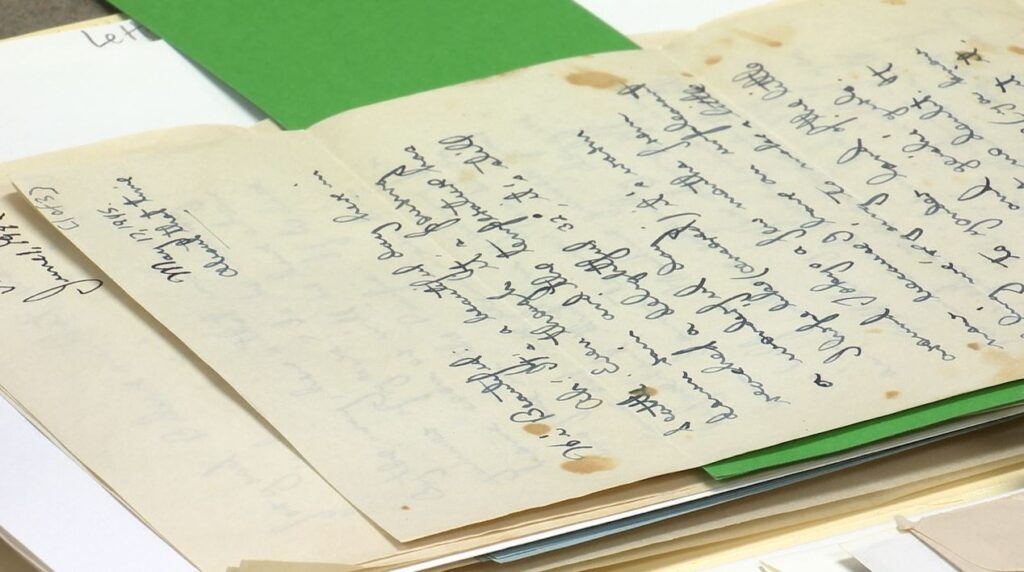MURFREESBORO, Tenn. (WKRN) — “This is Smyrna Bulletin No. 9, dated June 11, 1944, just after the invasion. Dear friends, last week was an eventful week in our lives. America anxiously awaited D-Day. We rejoiced as the news arrived and a great star was born. The nation had never been more worshipped than it was then. And the nation’s churches have never been more enthusiastically attended.”
Dr. Louis Kyriakoudes, director of the Gore Center at Middle Tennessee State University, read words from Adeline King, whose breaking news reached dozens of Smyrna young people fighting for their lives.
“She would talk about her day-to-day life, about what was going on in Smyrna, what was going on in Tennessee, and we know from other letters that this was a great comfort to the soldiers, because they would write back to their families in other letters that we have in our collection saying that they had heard this and that from Mr. King,” Dr. Kyriakoudes explained.
Ghost Army: How a World War II mission ‘kept secret for years’ created a legacy too big to keep quiet about
This is a fascinating glimpse into life during wartime and is just one part of MTSU’s Tennessee Maneuver Collection, which connects our greatest generation with today’s.
“I grew up here but didn’t learn anything about it in school. It wasn’t until I started working at MTSU’s Center for Historic Preservation that I found out about it,” Dr. Stacey Graham said.
 (Photo: WKRN)
(Photo: WKRN)
Few people know that more than 800,000 soldiers received combat training in 21 Middle Tennessee counties during World War II, and now an expert in the field, Dr. Graham brings the state’s unique history to the classroom.
“So we’ve created a curriculum guide. Basically, one of our researchers, Dr. Colby Elaine Hogan, worked with myself, my colleagues and partners across the state, including the Gore Center, to create this guide. We’ve created this guide that anyone can download for free on our website,” Dr. Graham said.
In four sections, this guide explores the important role Tennessee has played in shaping world history.
“But what this program does is bring local stories into the classroom, engaging students and getting them to think locally and connect that to larger national trends and events,” Dr Graham said.
Children have meaningful interactions in places they know, such as Carthage, Paris, and Tullahoma. The educational unit tells the story of why Tennessee was so important to the war effort and how everyone played a role, both in and out of uniform.
 (Photo: WKRN)
(Photo: WKRN)
“And then in our unit on Tennesseans, we’ll look at all the civilian efforts and what they did to support the war effort, like women growing victory gardens and there were a lot of Girl Scouts who were very active in supporting the war effort,” Dr. Graham said.
Camp Forrest: Middle Tennessee’s Role in Training Soldiers During World War II
Students will explore how the Tennessee Drills transformed young Americans across the nation into soldiers, united volunteer states, and even created history within history.
“The only African-American battalion that participated in the Normandy landings was a battalion assigned to the balloon defense force,” Dr. Graham said.
This is state history, not something to put away in a box, but to be brought to life in the classroom.
“This is going back in time, but we don’t really have a time machine. What we have are historical documents of people from the past that speak to us in their own words,” Dr Kyriakoudes said.


